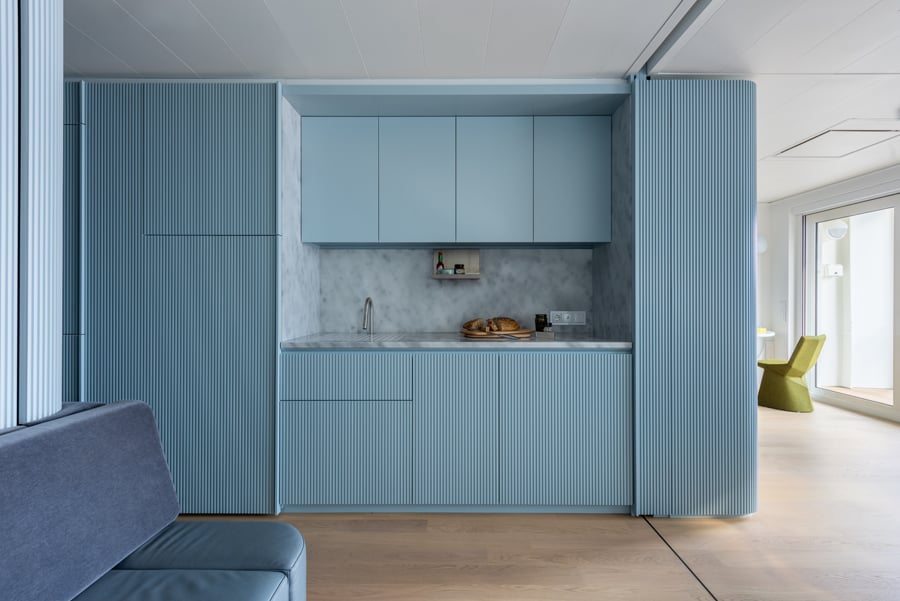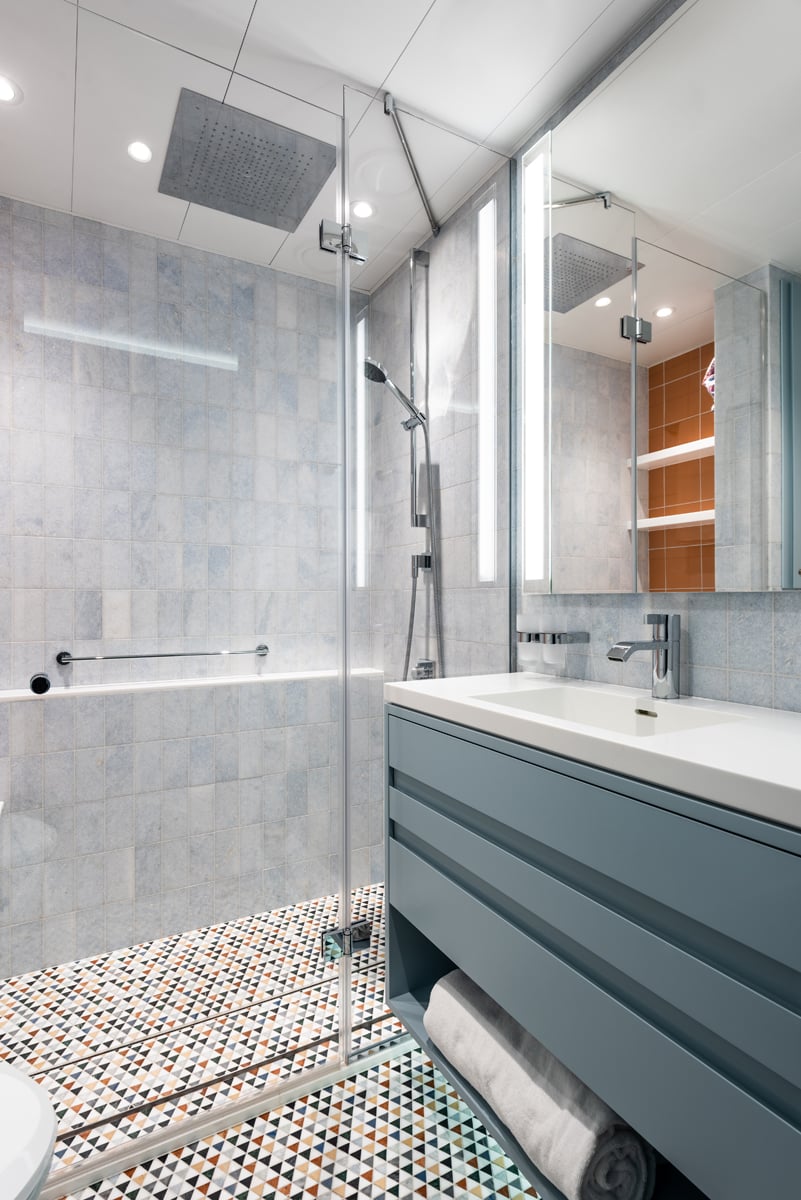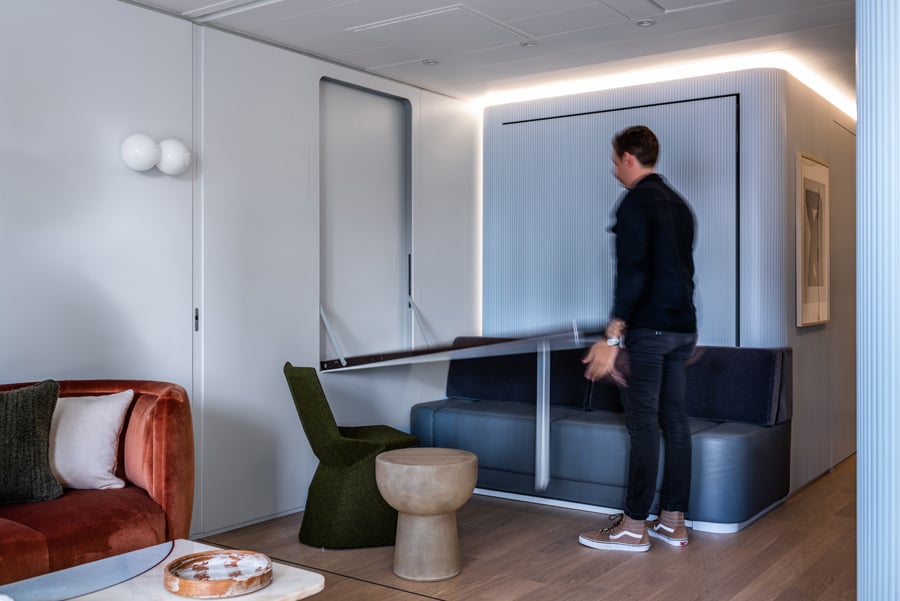
November 19, 2020
A Floating Apartment Proves Small Is Beautiful
Michael K. Chen demonstrates restraint and ingenuity with an unusual vacation home, a floating apartment aboard a 600-foot ship.
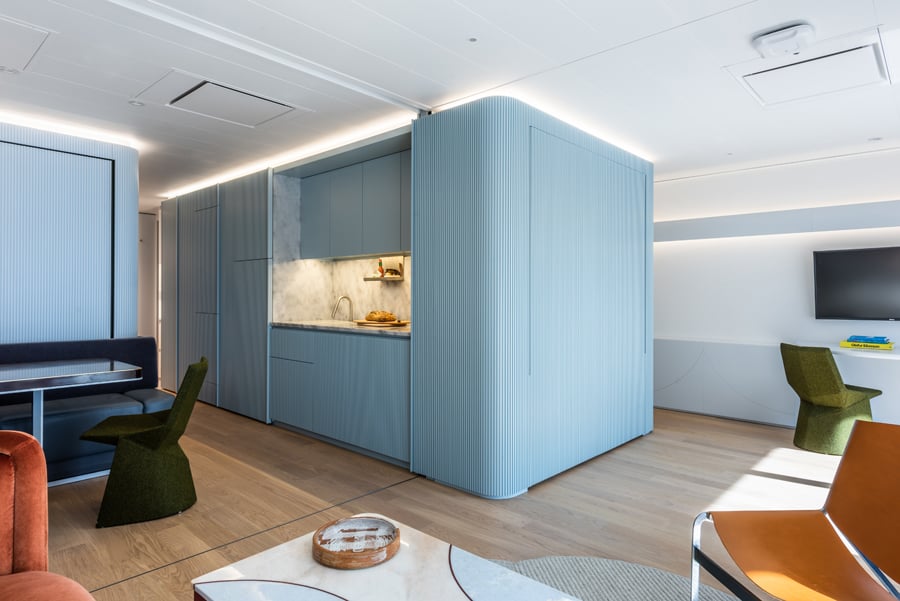
Not least among the constraints posed by designing an apartment at sea are the strict timelines of a ship’s cruising schedule and drydock periods. In fact, when a family first approached Michael K. Chen, principal of New York firm MCKA, about designing an interior for an apartment aboard a small, exclusive cruise ship, the construction dates were already set. Chen and his team had only eight months to design an interior that could be prefabricated and transported to the shipyard in Spain where the ship was scheduled to be for regular maintenance.
For an architect who has become known for interiors that shift and transform to suit a range of uses, the constraints of a small suite aboard an ocean-going ship opened up new possibilities. “I am very interested in craft, and really interested in the programmatic range one finds in small spaces, because the ambitions aren’t smaller, even though the square footage is smaller,” explains Chen. “What makes this space luxurious is the fact that there are very few compromises in terms of what the space will accommodate,” he continues.
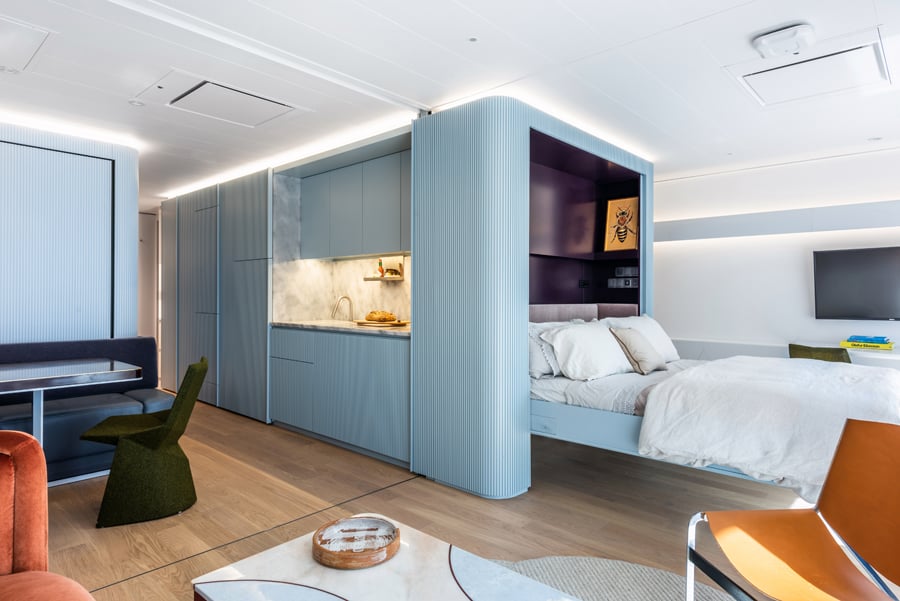
For this particular “pied-à-mer”, as the firm has taken to calling it, the program was ambitious: In addition to a bedroom, the client needed a guestroom for visitors, two bathrooms (one with a full-size bathtub), a full dining room, a living room, a kitchen, some space to work, and a bit of storage. A tall order for 600 square feet. Fortunately, Chen realized that no one ever needs a guest bedroom, a living room, and a dining room all at the same time. Perhaps these functions could share a footprint.
The resulting interior features a cleverly concealed Murphy bed, as well as a custom-designed table that folds into a pocket on the wall, and releases at the touch of a button, transforming a sofa into a banquette. Chen says that on a ship that’s prone to pitch and roll when underway, the security of moving parts is of the utmost importance. “It’s very gentle, the motion [of the table dropping] is assisted, the leg comes down automatically, and when it’s down you can stand on it. It’s not some panel that came down from the wall, it’s made of bronze and solid aluminum and it operates in a featherweight kind of way,” he says.

Though the space was pre-defined by the ship’s steel bulkheads (that’s walls for us landlubbers), Chen spun the space into a unique modern interior that doesn’t go in for yachty cliché— you will find no exotic hardwoods varnished to chrome-like shininess, brass fittings, lanterns, or bits of rope here.
Instead, the space takes inspiration from the mechanical nature of the six-hundred-foot ship. “I think that the presence of the machine is really strong in the space, not just because you’re on a moving vessel, but because of the construction, the nature of the construction, the materials, and the sounds that are around you.” Ribbed aluminum panels painted sky-blue cover most of the walls, helping to capture variations in light and shadow that change with every day on the sea and every port of call. They also help to conceal panel divisions, minimizing visual noise and making the space, small though it is, a serene and comfortable refuge for its passengers.
You may also enjoy “New Talent: Jerome Byron is a Rebel Without a Pause.”
Would you like to comment on this article? Send your thoughts to: [email protected]
Register here for Metropolis’s Think Tank Thursdays and hear what leading firms across North America are thinking and working on today.









